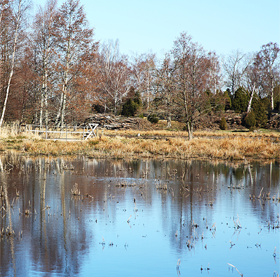Wetland restoration for viable predatory fish stocks
The populations of predatory fish such as pike and perch have declined significantly along the Swedish east coast. The causes are not fully defined but it is clear that reproduction appears to be disturbed, especially in outer areas. The Swedish Anglers Association finished during 2012 this project that has identified wetlands that can be restored to function as spawning grounds for pike along the Swedish east coast. In addition to identifying suitable wetland areas they have supported landowners of 20 suitable wetlands with planning and necessary permits for restoring these wetlands. The final report with detailed descriptions is available here (in Swedish).
Background
The predatory fish’s, especially the pike’s, reproduction ability in freshwater habitats have been decimated by ditching and other human activities. There is great potential to implement restoration measures that strengthen the predatory fish stocks in a cost effective manner. Where attempts have been made with the restoration of wetlands suitable for reproduction by the predatory fish, the work has been successful. At Oknö in Kalmar for instance, the emigration of young pikes to the Baltic Sea increased through a restoration measure by 3 000 to 65 000 in a year and has since then risen further. The wetlands also bind nutrients and reduce nutrient leaching into the Baltic Sea.
Objectives
The preliminary study will identify a large number of freshwater sites that are candidates for restoration measures with the aim to strengthening the coastal stocks of predatory fish such as pike and perch. The goal is to initiate more than 20 large-scale restoration projects and the necessary knowledge for a successful implementation will be developed for the various restoration locations.

Project status
PROJECT MATERIAL
2013-02-06 - Final report (in swedish)
Åtgärder för mer rovfisk. Förstudie storskalig satsning på stärkta rovfiskbestånd
2010-11-30 - Press release
New major project for more predatory fish in the Baltic coastal areas








